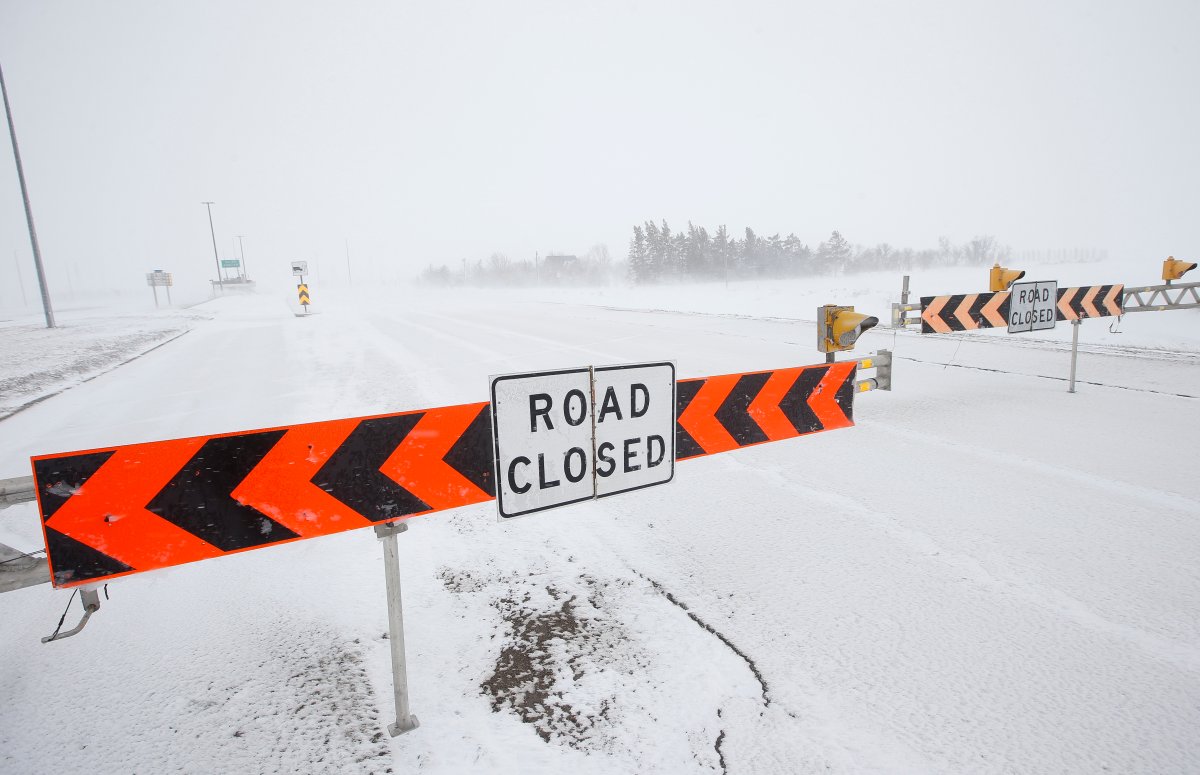
There aren’t many places where residents can get a foot of snow in the middle of Spring, and still be underwhelmed. Winnipeg may be one of them.
29 centimetres of snow fell on the city this week, paralyzing roads, stranding small cars, closing schools, and keeping most residents inside.
From the moment the Colorado Low popped up on meteorologist’s radars, it was going to be a big one.
Four days prior to the storm dropping its first flakes on the city, Environment Canada put out a notice stating it had “the potential to be the worst blizzard in decades.”
That messaging sent droves of Manitobans to grocery stores, clearing some out of essentials like milk.
It also prompted RCMP to preemptively close local highways — a decision that was later reversed — and the National Hockey League to cancel Wednesday’s game between the Winnipeg Jets and Seattle Kraken.
Warnings from North Dakota came rolling in, as the province’s southern neighbour experienced snowfall totals ranging from 10 to 30 inches. By those standards, what followed in Winnipeg was a bit of a letdown.
“Most of the forecasts called for 30 to 50 centimetres (of snow), with local amounts up to 80,” says Weatherlogics CEO, Scott Kehler. “So that aspect panned out just as expected.”
Some of the hardest-hit areas were in western Manitoba — towns like Onanole, near Riding Mountain National Park — where 680 CJOB listeners reported accumulation above 80 cm, and drifts higher than that.
But in the province’s most populous city, where over 55 per cent of Manitobans reside, the total came out on the low end.
Kehler says if not for a “dry slot” in the system that parked over Winnipeg, the city could have seen similar totals.
“(The area just to the north of the city, as close as Selkirk, was at 45 cm by Thursday afternoon. It really was a fine line between the ‘best-case scenario’ at 30 cm, and what could have been a lot worse.”
It was still a historic storm, especially for April.
Still, some Winnipeggers weren’t impressed.
The problem, according to Kehler, was the additional language used by Environment Canada, which was disseminated by the media.
“Calling this ‘potentially the worst blizzard in decades’ brings back memories of the ’97 blizzard.”
That one was fresh in the minds of Manitobans, who just last week marked the 25th anniversary of the infamous storm that dumped 48 cm of snow on the province. This year’s storm came 19 cm shy of that mark.
A city – and province – prepared
- What is a halal mortgage? How interest-free home financing works in Canada
- Capital gains changes are ‘really fair,’ Freeland says, as doctors cry foul
- Ontario doctors offer solutions to help address shortage of family physicians
- Budget 2024 failed to spark ‘political reboot’ for Liberals, polling suggests
Some believe the relatively minimal impact that Manitobans felt this time is because of the precautions taken by officials at provincial, municipal and law enforcement levels.
Jay Shaw, manager of the City of Winnipeg’s Emergency Management Centre, didn’t have to think back to 1997, but instead, just a few years back, to the Thanksgiving storm of 2019.
“We learned,” Shaw says, of the experience his team went through during a similar Colorado low that paralyzed the city on another holiday weekend.
“We built better relationships with our stakeholders, and I think our city is better prepared because of it.”
Experts say the heavy, wet snow the 2019 storm dumped on Winnipeg was different from the precipitation this time.
In 2019, the city was also sporting trees still full of leaves from the previous summer. The heavy snow buckled thousands of trees, some of them falling on power lines, leaving Winnipeggers in the dark.
“The second you have large-scale power outages, all those complexities come into place,” Shaw explains. “Those tend to be the problems that can require tons of resources, and be life-threatening.”
RCMP had closed the city’s Perimeter Highway eight times this season prior to this spring storm.
It was a step that felt unprecedented at first, but quickly became the norm every time a large storm rolls through.
“We realized the speed and onset of those secondary impacts could cripple us if we weren’t prepared.”
The message from Shaw: It’s better to be overprepared than underprepared.
“We prepared for ’97, we didn’t get it, and I’m happy we didn’t get it.”









Comments